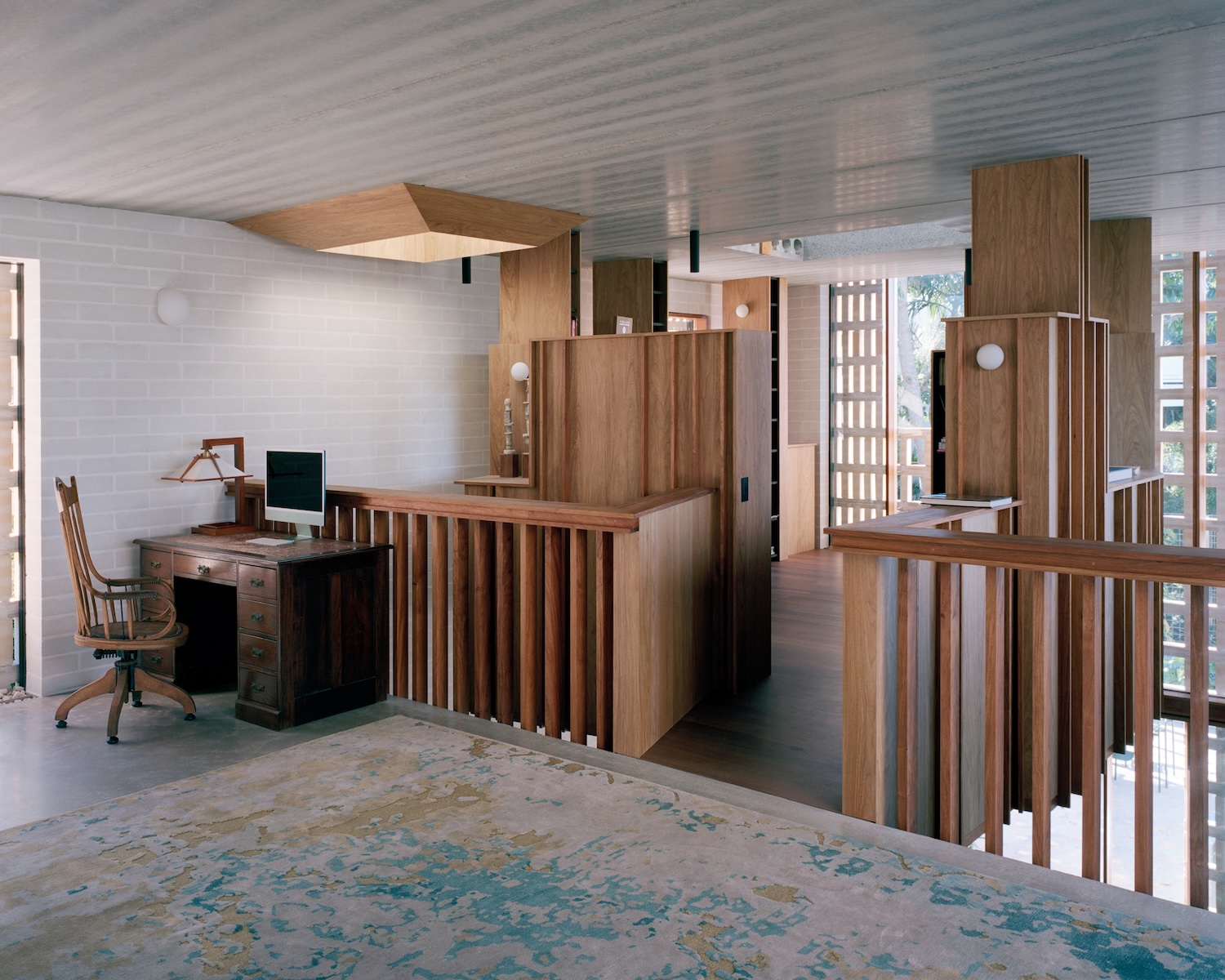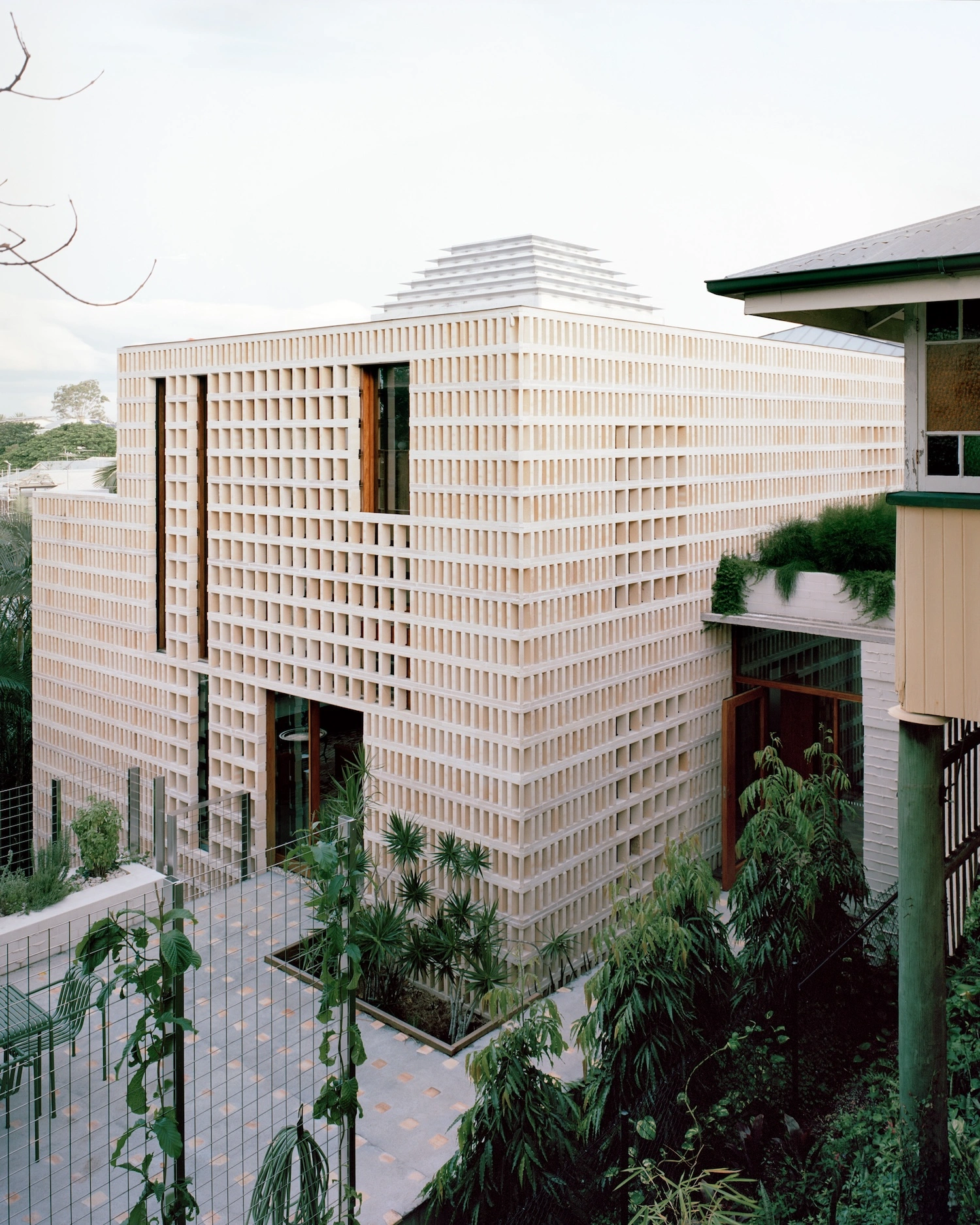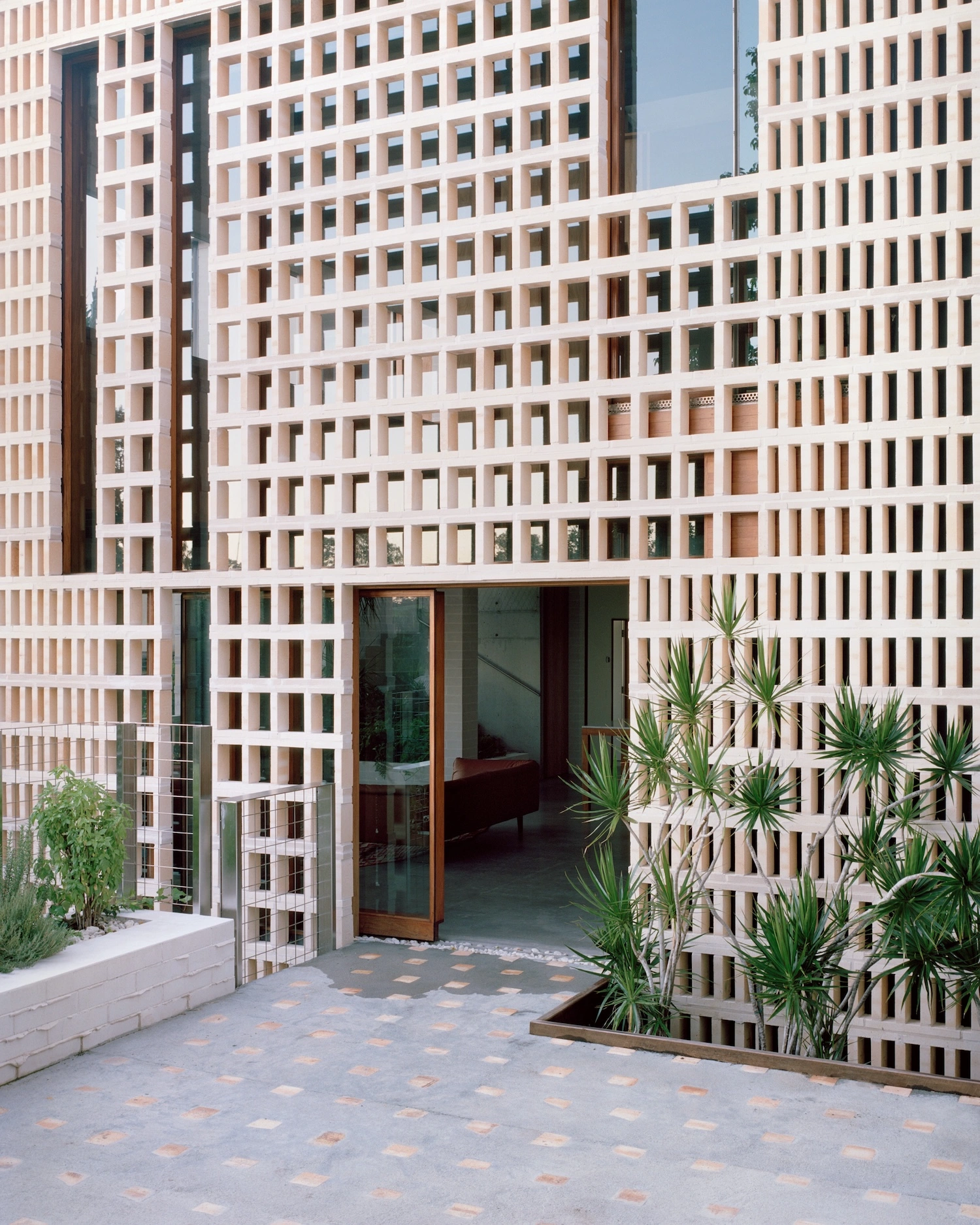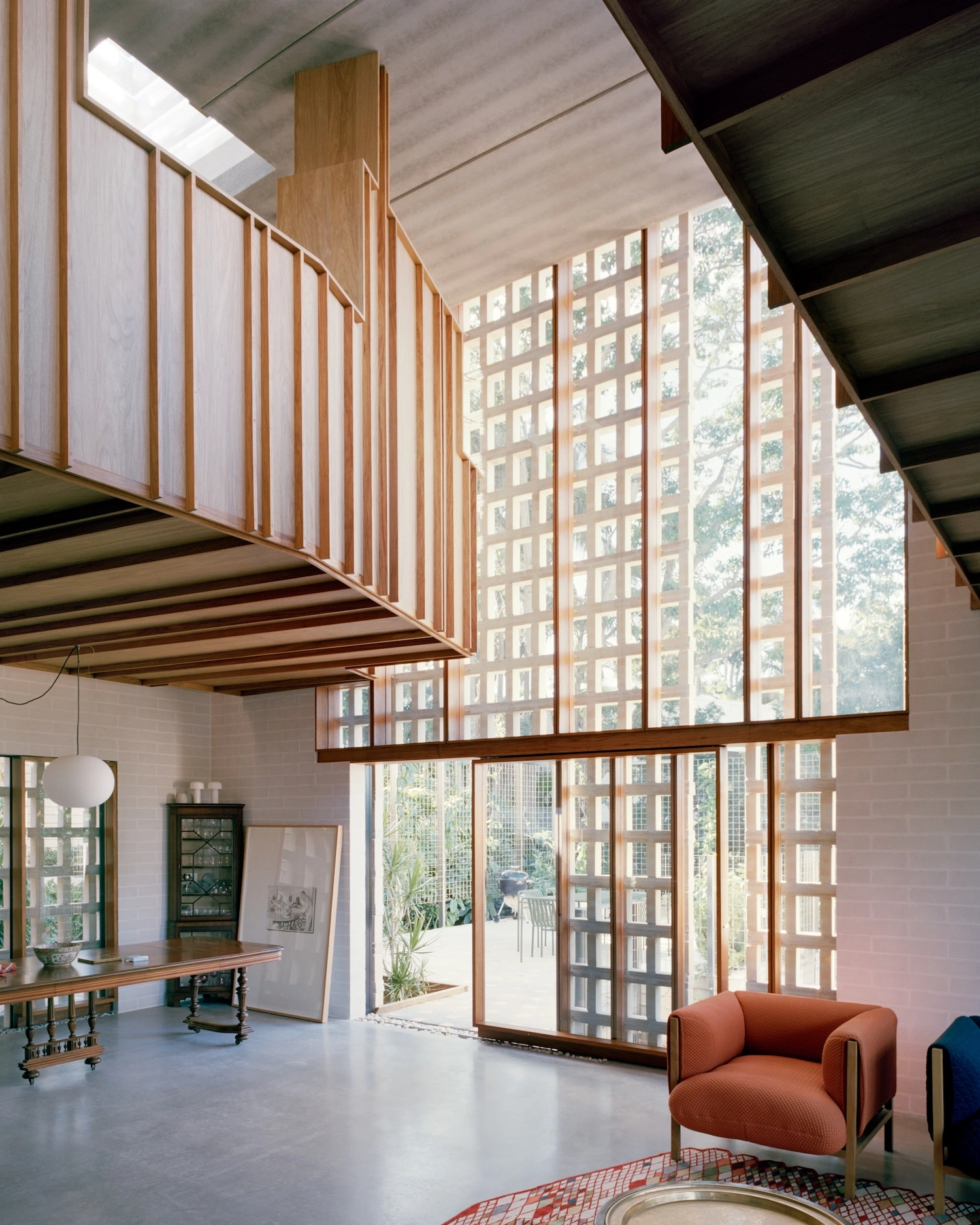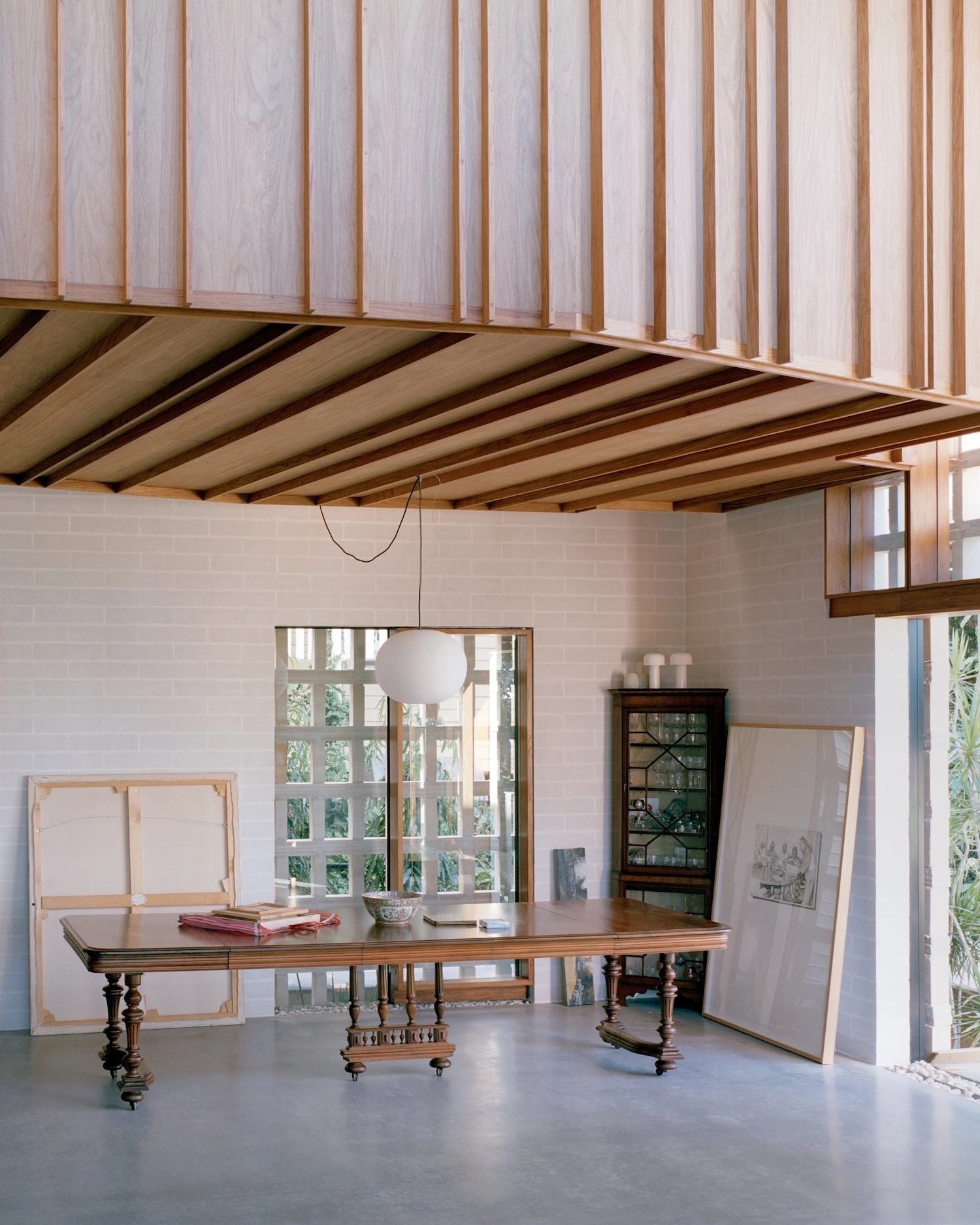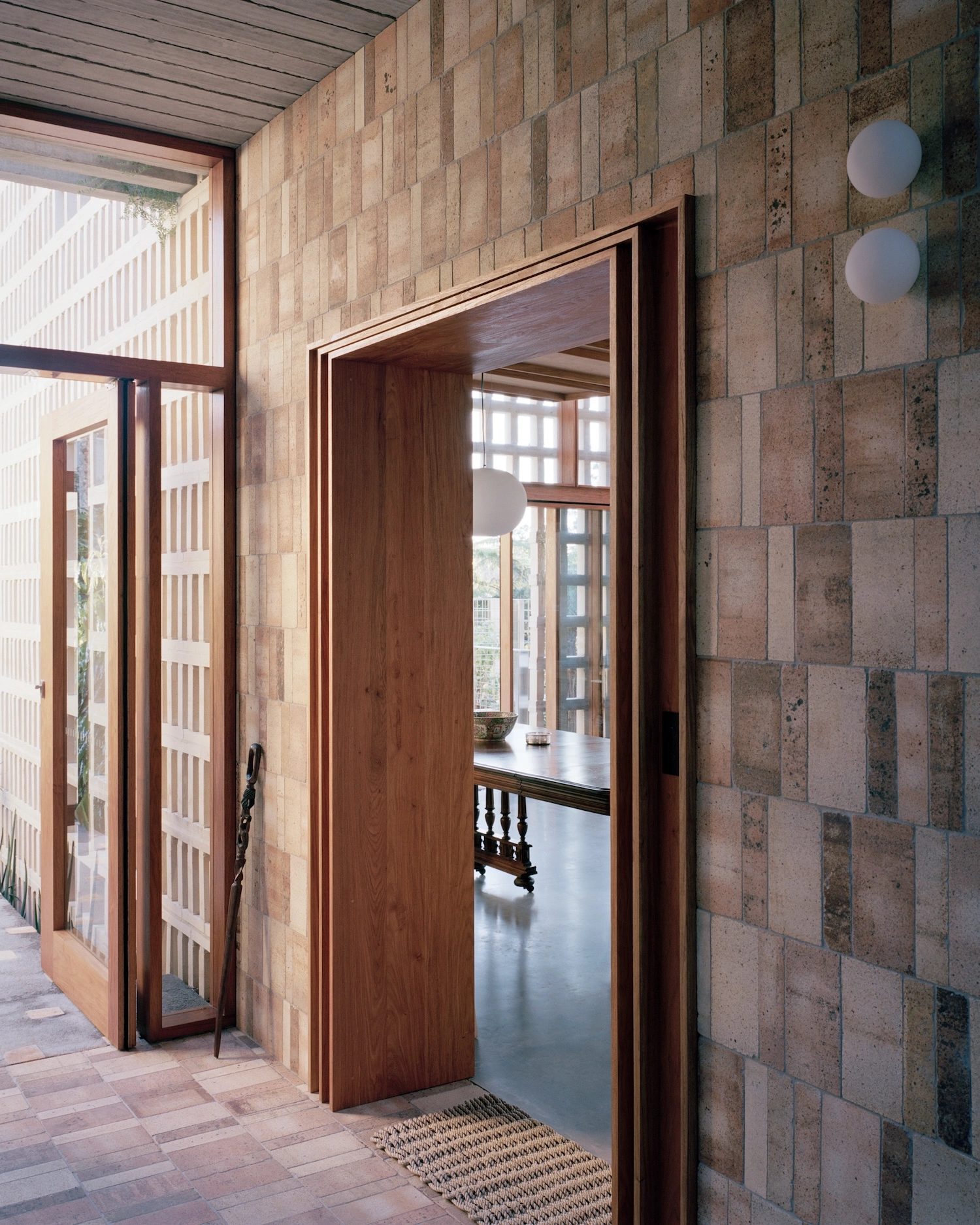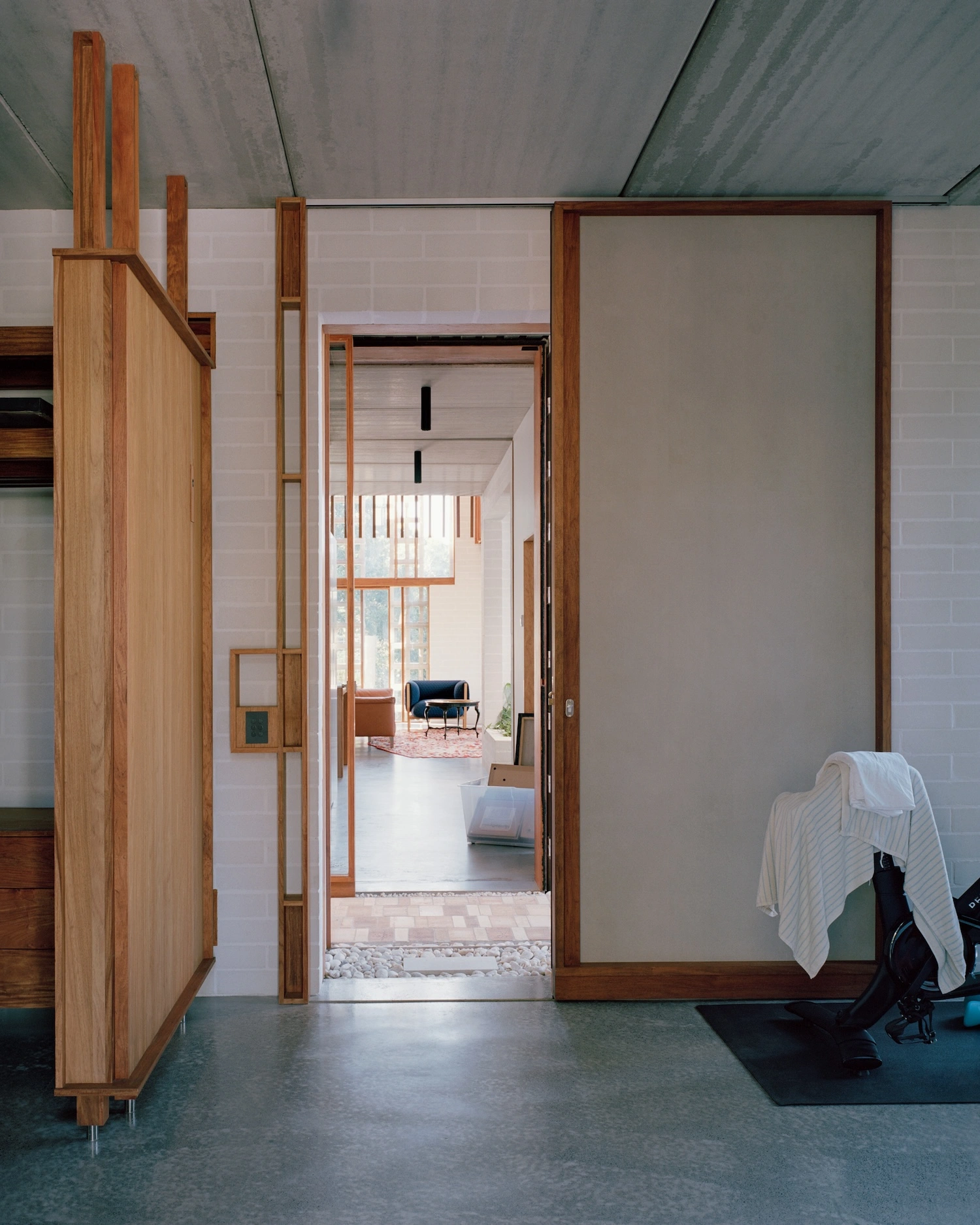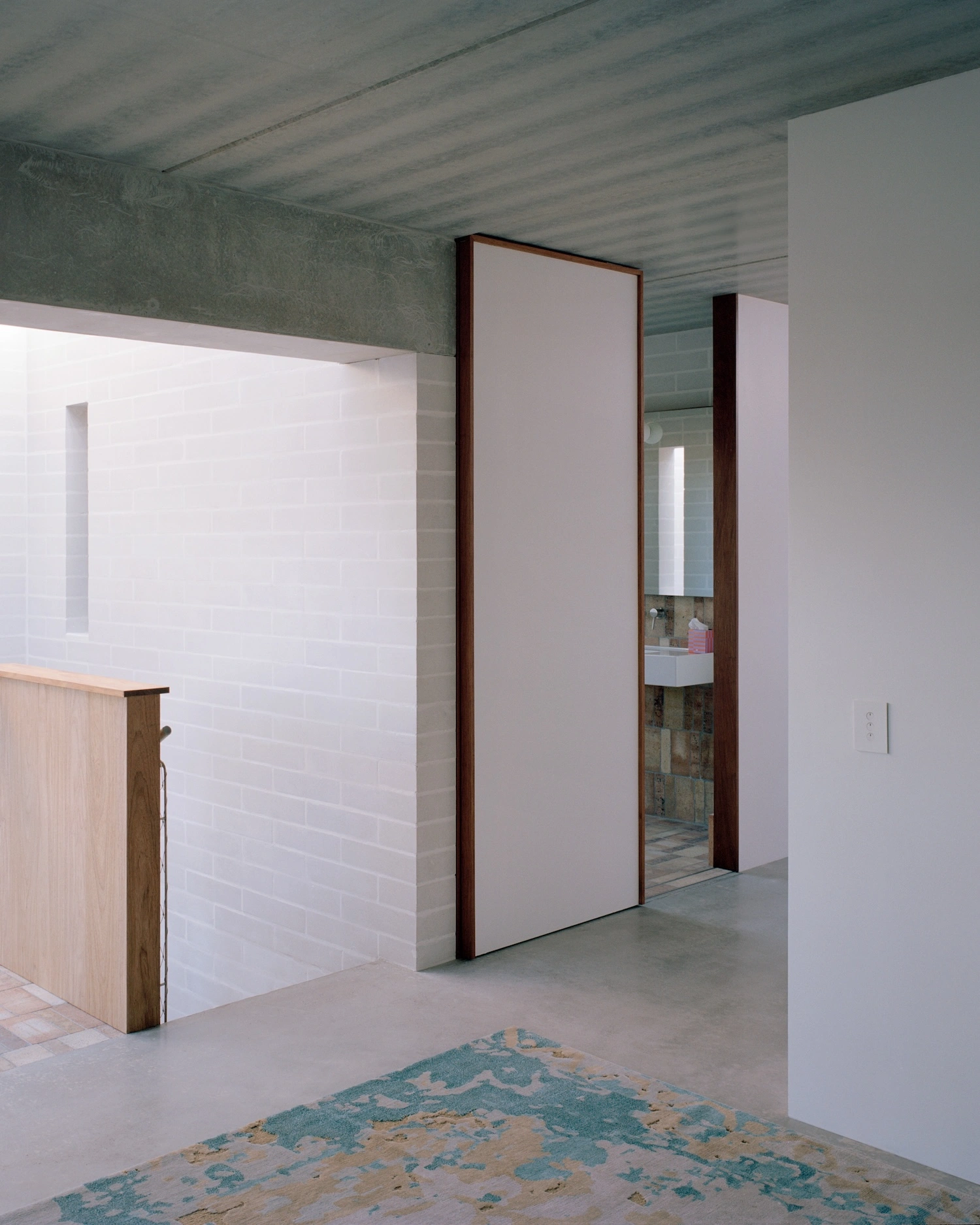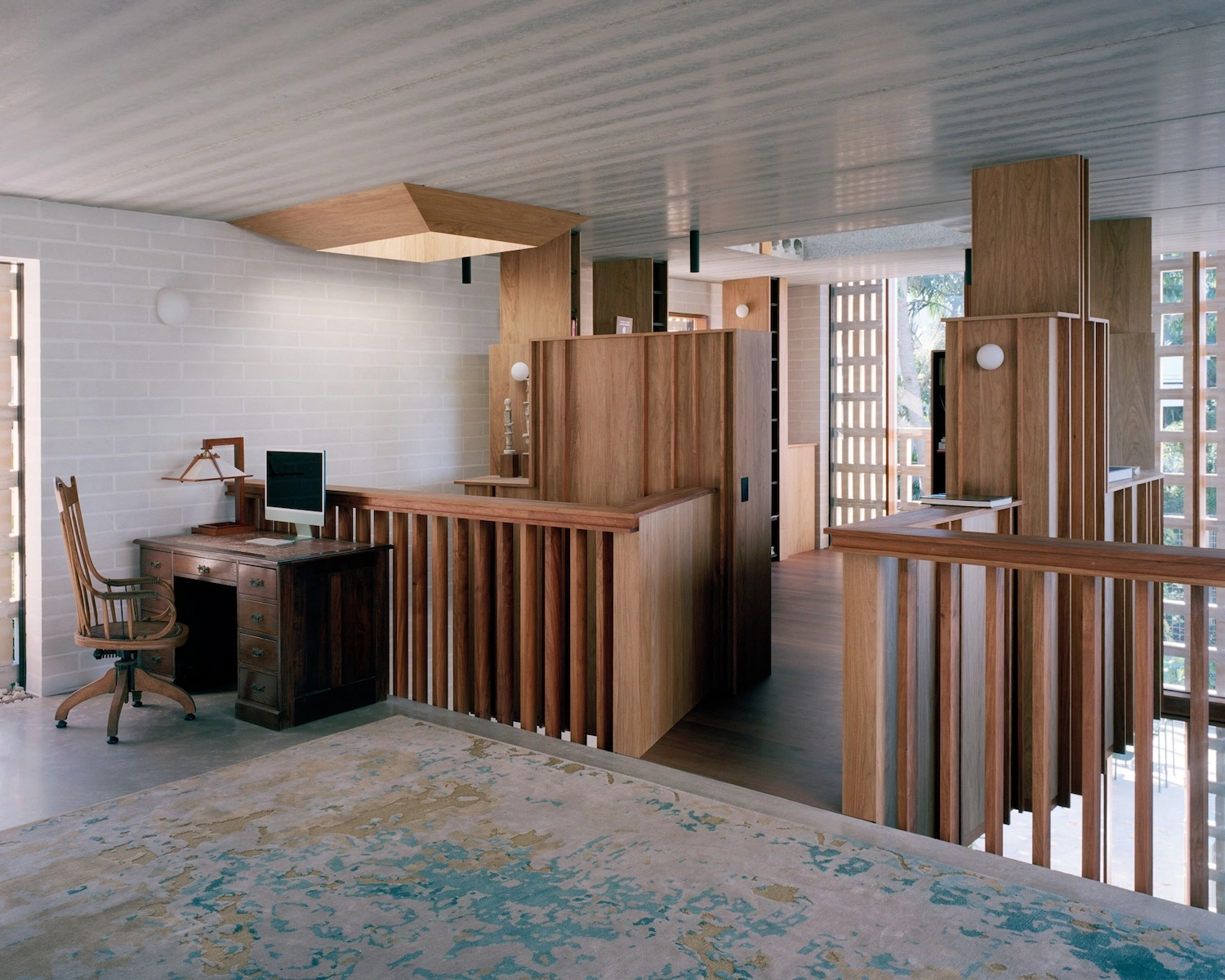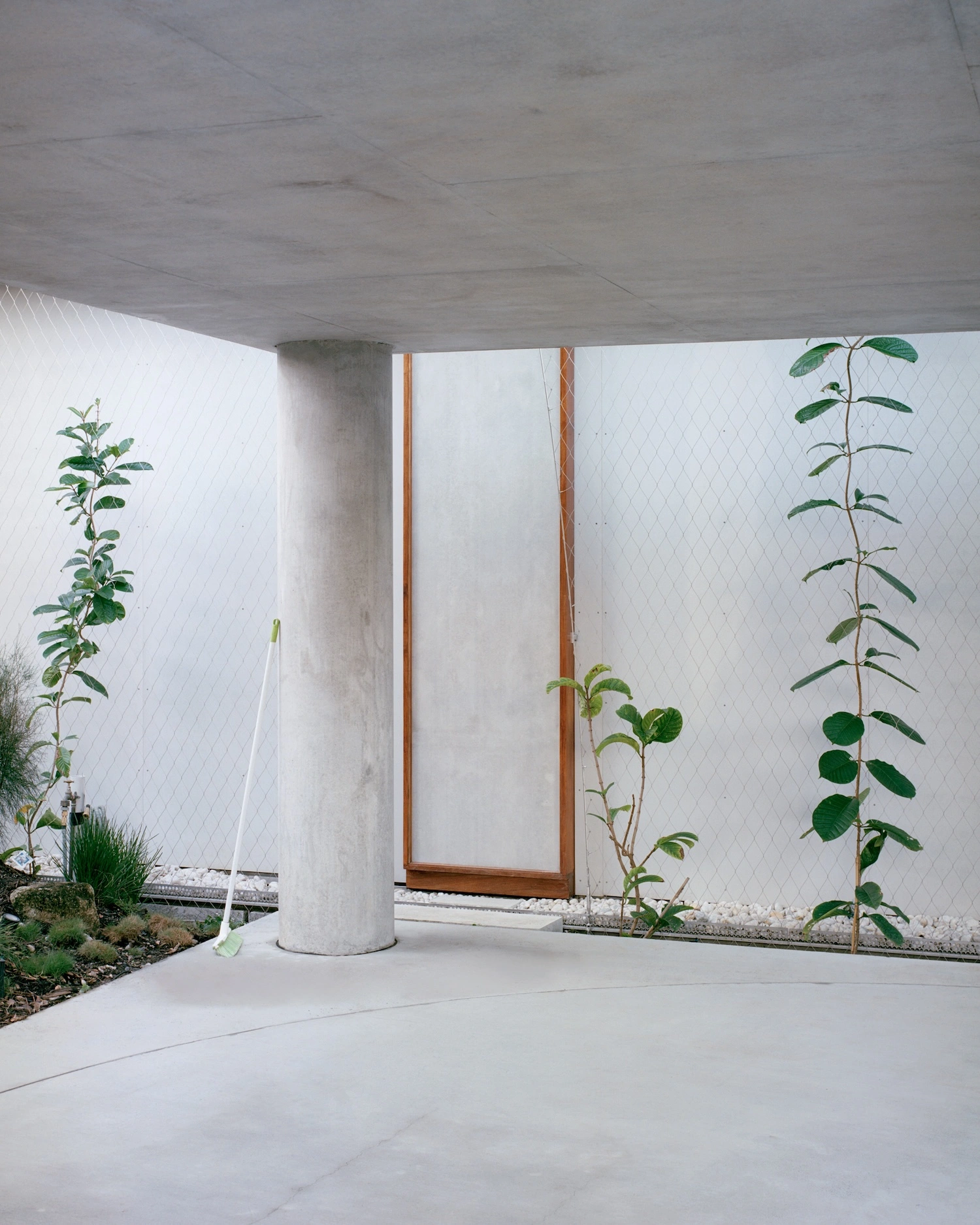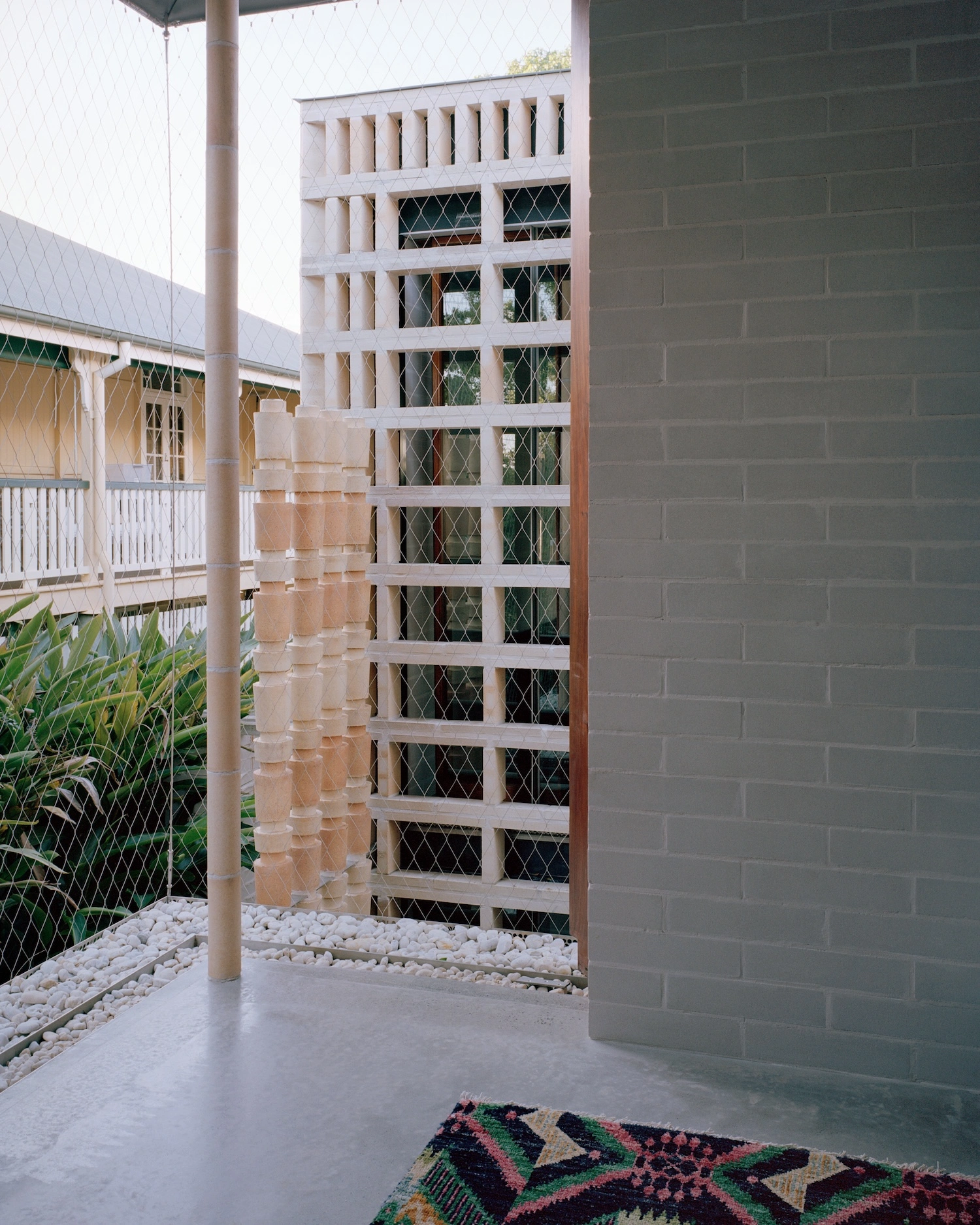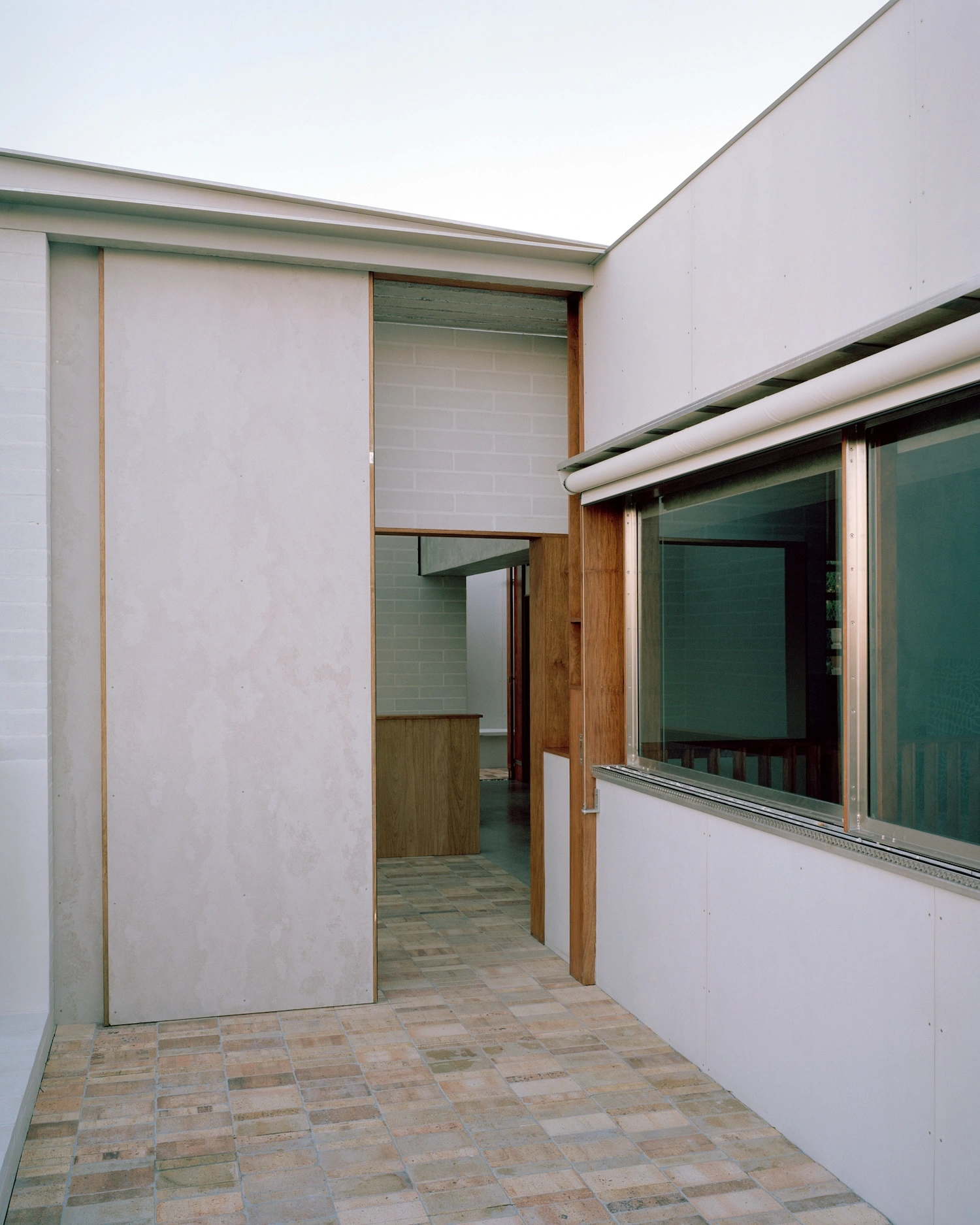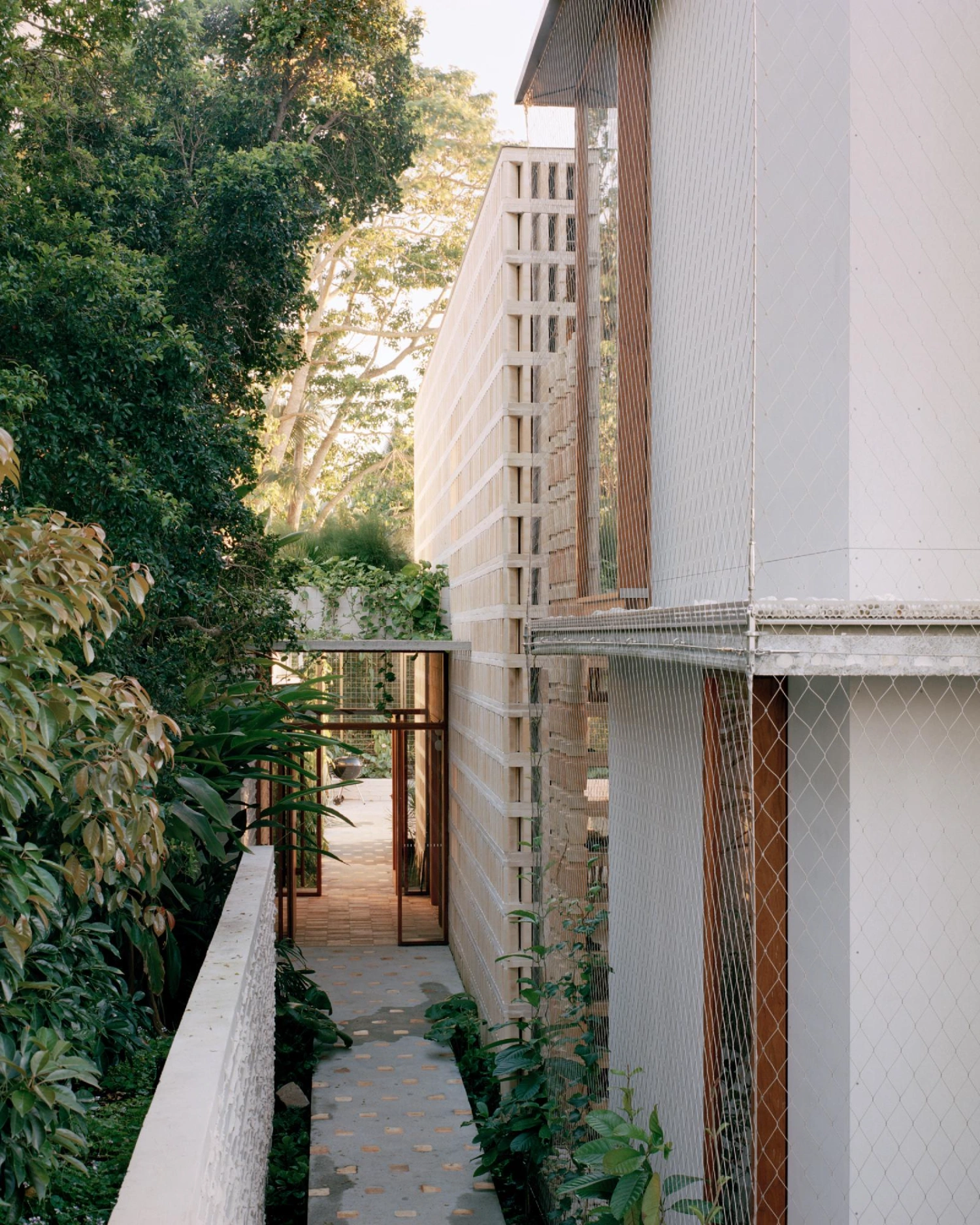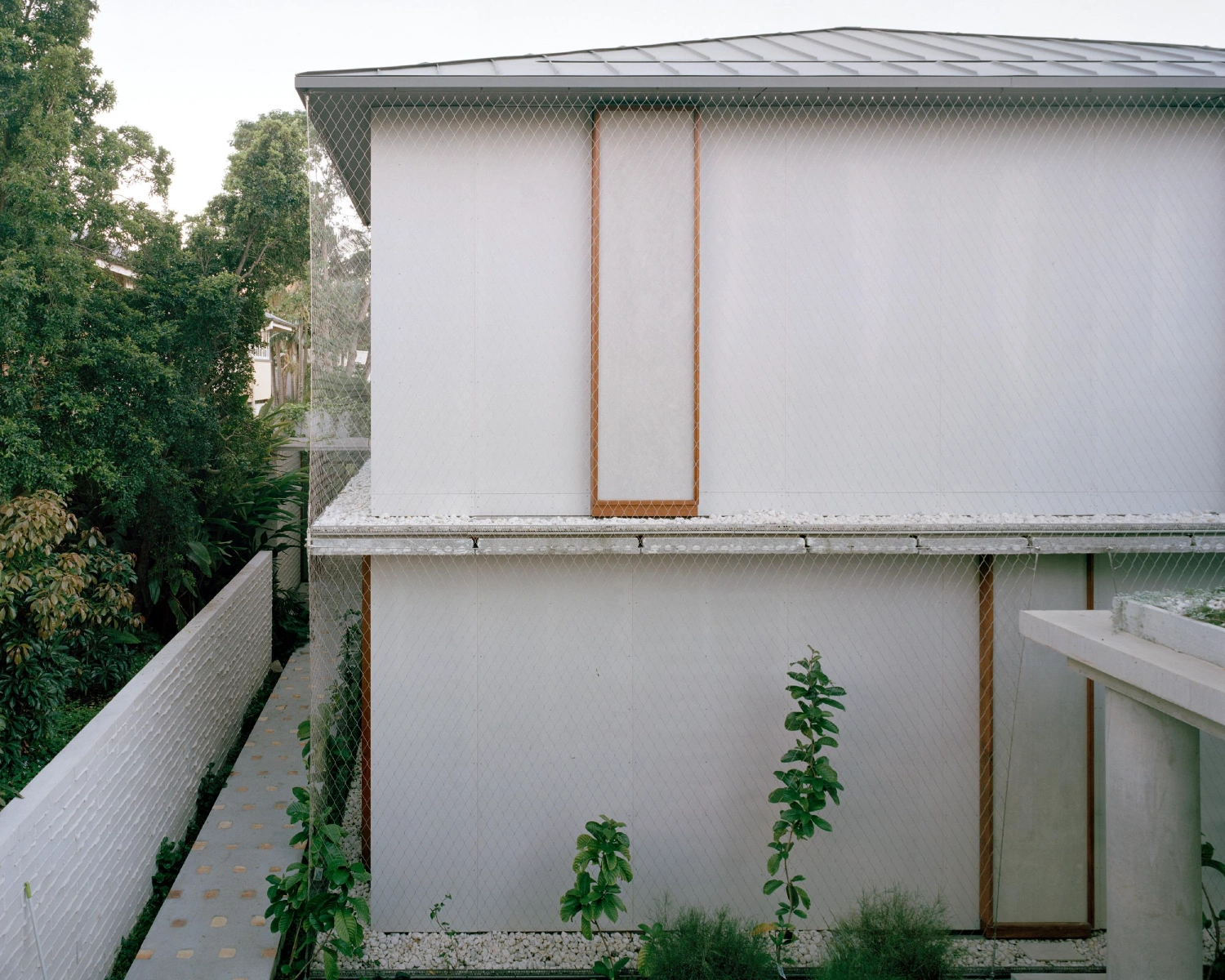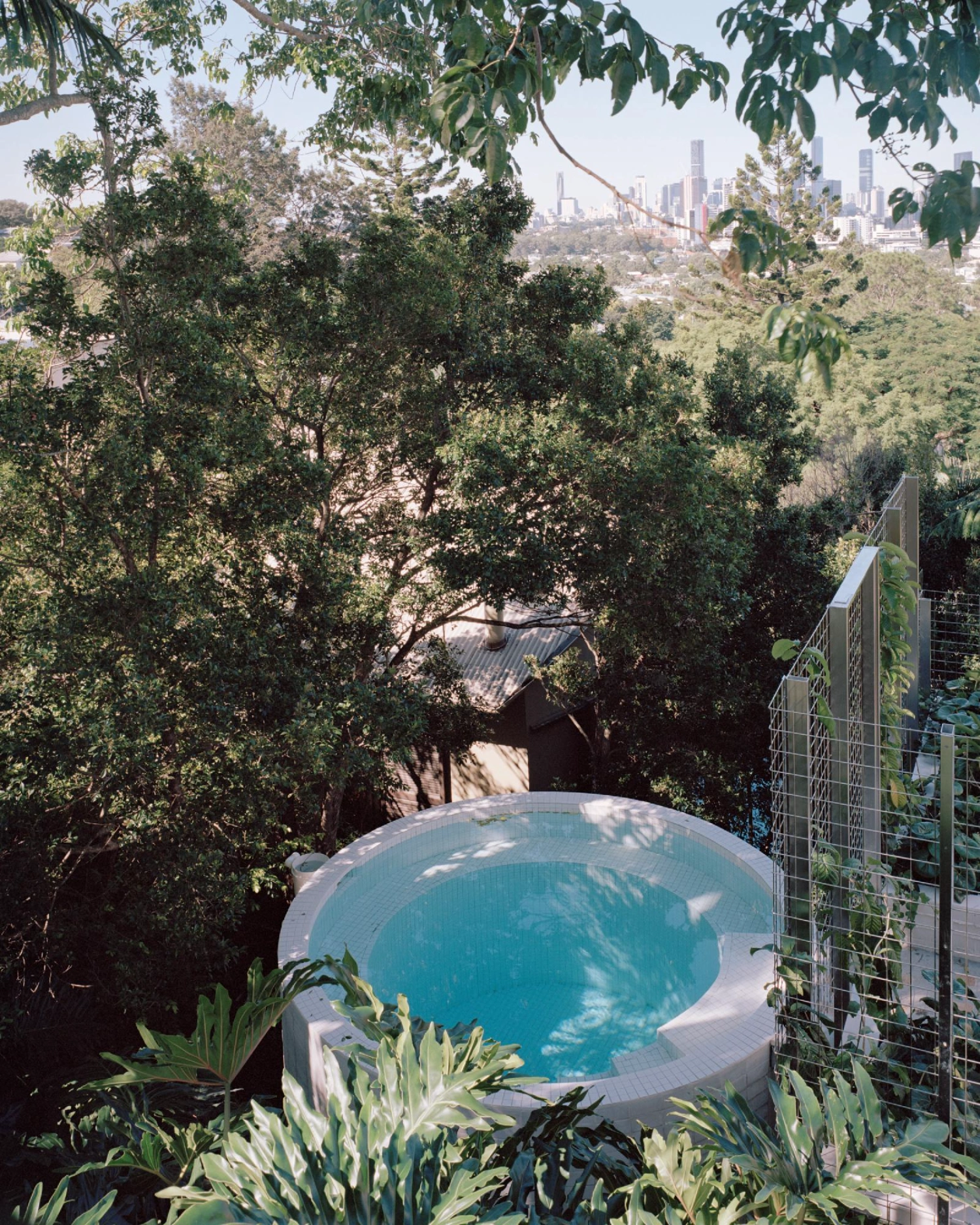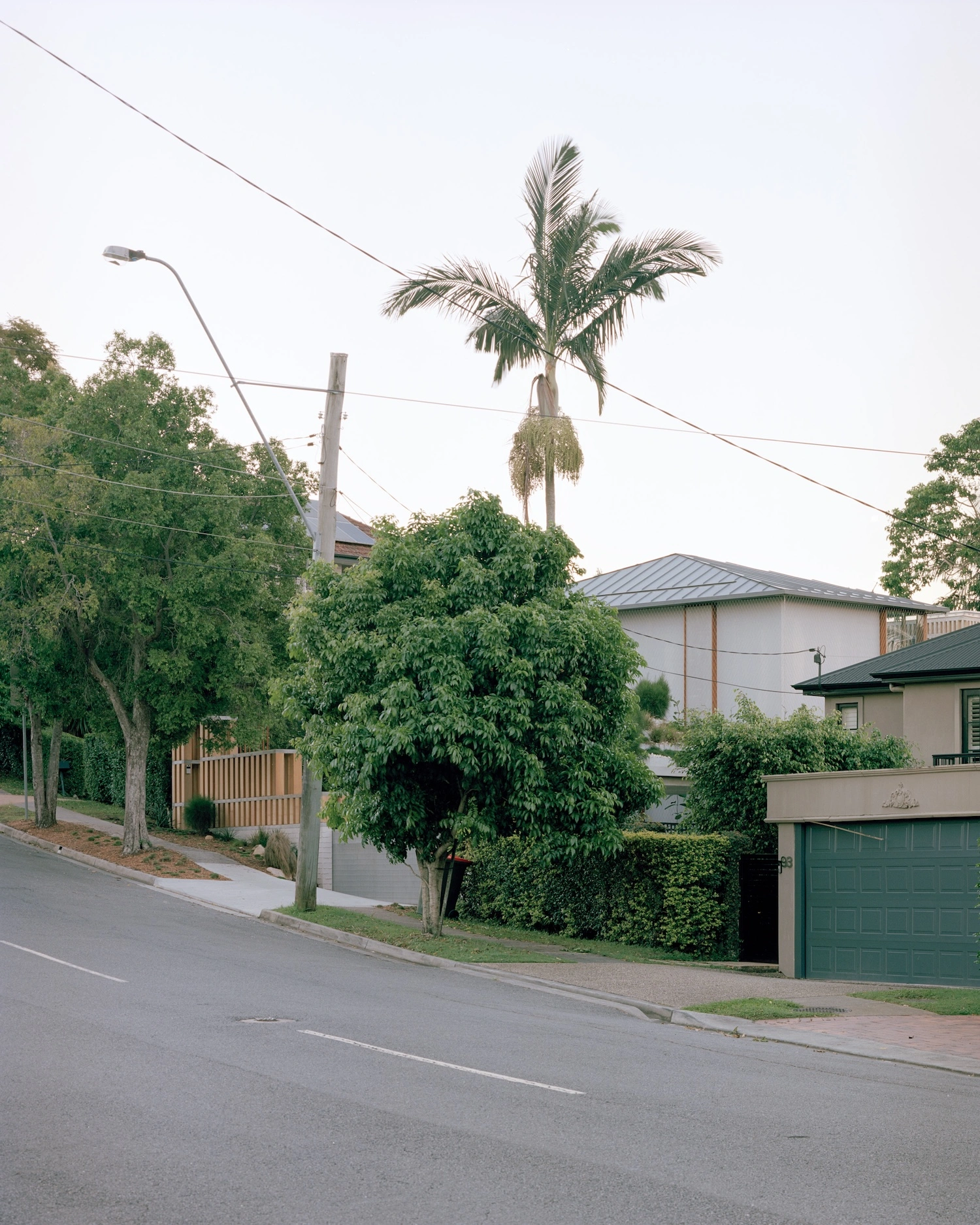Perched dramatically on a steep spur of Mount Coot-tha in the tranquil suburb of Auchenflower, Brisbane, Birdwood is a bold and contemplative new residence designed by architect Peter Besley.
Named Teaċ na Cré — Irish Gaelic for “House of Clay” — the home is a poetic assembly of reclaimed materials, fragmented forms, and crafted spatial experiences. At the project’s outset, both architect and client salvaged large quantities of unusual bricks and terracotta fragments from a defunct brickworks in western Brisbane. Many of these materials were never meant for domestic architecture; they were refractory ceramics used in metallurgy — relics of industrial processes reimagined as elemental components of the home. These pieces were worked into the architecture as walls, columns, tiling, and paving, lending the house its distinctive material richness and its name.
The terrain is demanding: a nine-metre fall from street level to the rear and a cross slope of four metres to the east. The house meets this challenge not with uniformity, but with fragmentation. Rather than a single dominant form, *Birdwood* unfolds as a constellation of volumes — separate but linked — that emerge from the slope like excavated artifacts. As one moves through the house, spatial and landscape relationships shift and reconfigure, revealing new orientations, textures, and views.
A key gesture is the rear volume, wrapped in a tall clay lattice of reclaimed bricks — frayed, patterned, and porous — acting as both screen and surface. Light filters through this skin, casting mutable shadows and protecting the interior from harsh sun. Entry to the house is deliberately pedestrian in emphasis: a long, elevated path guides visitors along the eastern edge, gradually revealing the layered terrain and terminating in the primary living spaces at the rear.
The architecture employs thermal mass for passive temperature control. The superstructure is robust and enduring, eschewing ornaments for integrity. Sustainability measures are embedded discreetly: photovoltaic panels, recycled roof ballast, large rainwater tanks, and ceilings of reclaimed hardwood. The design avoids synthetic materials — no paint, no plastics, no extraneous finishes — relying instead on the expressive potential of recovered brick, terracotta, and timber.
Inside, the main room features a dramatic suspended library — a piece of joinery hung from the roof, housing the client’s extensive collection of books. It’s a study space that mediates between introspection and outlook, offering long views across the city and landscape. To the rear, a large terrace steps down to a circular plunge pool — a self-supporting brick cylinder rising sculpturally from the slope.

